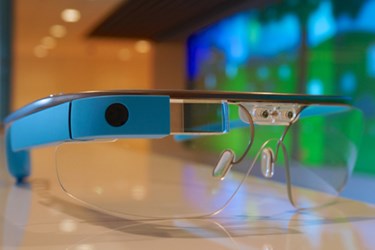New Google Glass App Looks To Improve Surgery
By Joel Lindsey

Stanford University physician Homero Rivas recently demonstrated the use of a new Google Glass app designed to help surgeons perform more precise surgical procedures.
The app, called MedicAR, was created by European app developer Droiders, and is designed to bring the technologies of augmented reality and Google Glass together for use in the surgical theater.
“You don’t need to go in blind anymore,” said Rivas in an article published by Venture Beat News. “Now, we have an educated impression of where a mass is. We can better understand exactly where to make an incision so we can create less trauma.”
Rivas’s recent demonstration of the new app — which featured the performance of an open reduction and internal fixation of a left complex clavicular fracture on an anatomical human model — was live-streamed to physicians around the world. Stanford also released a short video outlining the basic functions of the MedicAR app.
The MedicAR app requires the surgical target area to be temporarily tattooed on the patient’s skin. Looking through their Google Glass devices, surgeons then direct their view to the target area, and an augmented reality image appears on the surface of the Glass. This image provides a detailed view of important aspects of the surgical site, as well as a step-by-step animation of the procedure itself, according to a press release circulated by Business Wire.
“For example, [the augmented reality animation] could start by displaying the skin incision, the use of retractors to provide adequate exposure of the area, the core surgical treatment and finally the closure of the incision,” explained the press release.
App developers and surgeons like Rivas claim that MedicAR could be helpful in providing important information to surgeons while in the actual surgical theater, as well as to medical students in training.
“Soon, I’ll be able to implement all the algorithms from the MRI, send it to Glass, and then sit in front of the patient on the examining table,” said Rivas. “I’ll lay my eyes on the abdomen and see the hologram of the MRI to determine exactly where the mass is.”
After the successful demonstration, Rivas indicated that cost may currently be the largest obstacle to widespread implementation of wearable devices like Google Glass and augmented reality apps.
“While $1,500 may not be much compared to, say, an MRI machine, many hospitals recently invested in tablets, so Glass will need to provide significant value beyond what iPads can offer in order to justify a second round of tech investment,” said Venture Beat News.
Google Glass is scheduled for a public market release sometime toward the end of the year. The MedicAR app can be downloaded directly from the Droiders website.
Image Credit: “Google Glass at Center for Total Health.” Ted Eytan. © 2013 By-SA 2.0: https://creativecommons.org/licenses/by-sa/2.0/
